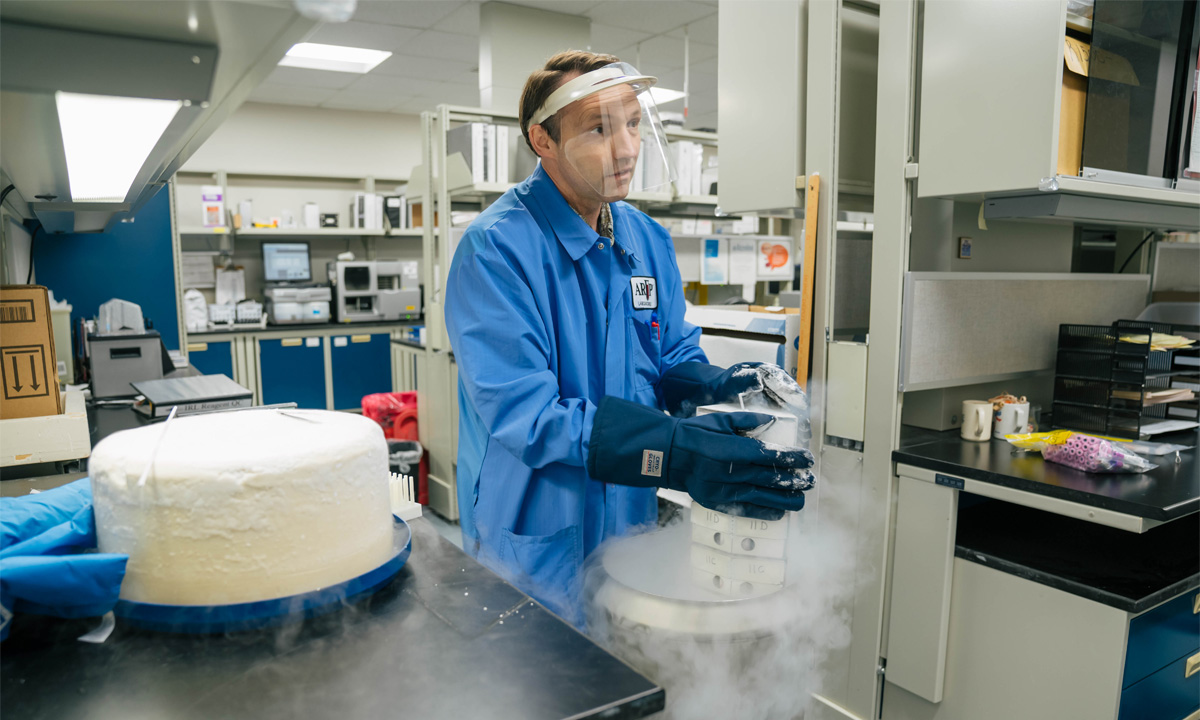
Noël Pusey, a medical laboratory scientist in ARUP Laboratories’ Immunohematology Reference Lab, performs testing to ensure that patients in need of blood transfusions are matched to the most suitable donors.
Like many young college students, ARUP Laboratories’ Noël Pusey wasn’t sure where he wanted to focus his career path. A lover of both art and science, Noël decided to study microbiology before switching his major to medical technology—and ultimately diving headfirst into a career in laboratory science.
As a blood bank specialist in the Immunohematology Reference Lab (IRL) at ARUP Laboratories, Noël has been using his creative fire to help solve laboratory puzzles in transfusion medicine for nearly three decades.
“I’ve loved every minute of it,” said Noël. “The careful work of laboratorians has always been the foundation of critical medical decision-making. You do need to have a bit of a creative approach because it’s all problem-solving and trying to figure out what they can’t figure out somewhere else.”
Noël’s story is among the many profiles of laboratory professionals highlighted by the American Clinical Laboratory Association (ACLA) as part of the 2022 Laboratory Professionals Week, which honors the behind-the-scenes lab workers who go above and beyond for patients.
ARUP’s IRL handles both routine and complex serologic testing for hospitals across the United States so that patients in need of blood transfusions are matched with the most suitable donors. This work demands painstaking accuracy because the outcome for a patient is so critical—it can literally mean the difference between life and death.
“It seems a little trite to say, ‘the patient comes first,’” said Noël. “But that’s what we do; we make sure the patient can receive a safe transfusion as quickly as possible. They are waiting on us to provide the answer.”
For Noël, the bigger the diagnostic challenge, the better. Recently, a patient developed several antibodies to the donor blood they had received. Noël’s lab scrambled to diagnose the issue (a delayed transfusion reaction) and found a solution that stabilized the patient.
“It’s fun to find those rare situations and to see the science at work,” he said.
It’s a big part of why Noël loves what he does “on the bench.” Technologic advancements such as molecular genotyping and automation have created new ways for lab professionals to do their work—think titrating robots—but sometimes it all comes back to the basics.
“The main things we still use are test tubes and drops of blood,” said Noël. “It’s more of the pure science. It’s how things work and why things work.”
Jennifer Dobner, jennifer.dobner@aruplab.com
















